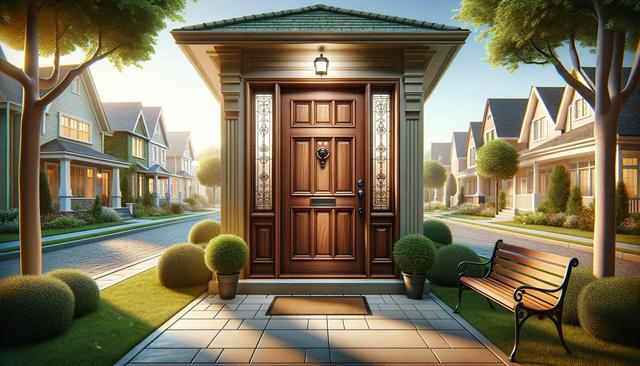
Exploring Front Door Options for Style, Security, and Efficiency
Understanding the Importance of Your Front Door
The entry door is more than just a way to enter your home—it is a focal point that reflects the character of your residence and plays a vital role in security and insulation. When exploring front door options, homeowners often seek a balance between appearance, durability, and performance. A well-chosen front door can elevate the look of the entire property while also protecting against external elements and unauthorized access. By considering various materials, designs, and technologies, you can find a door that suits both your aesthetic preferences and practical needs.
Front doors often serve as a design statement. From traditional wood to sleek modern fiberglass or steel options, the variety is extensive. Each material comes with its own set of benefits. For example, wood offers a classic, warm appeal, while fiberglass resists wear and requires less maintenance. Steel is often chosen for its strength and affordability. Selecting the right option depends on the climate in your area, the style of your home, and how much maintenance you are willing to commit to.
Materials That Make a Difference
The material of your entry door significantly impacts its performance and longevity. Common materials include:
- Wood: Offers visual warmth and charm; suitable for traditional and rustic homes.
- Fiberglass: Known for durability and resistance to warping or denting; a versatile choice.
- Steel: Excellent for enhanced security and energy efficiency; typically more affordable.
- Aluminum: Often used in modern designs with a lightweight frame and sleek finish.
Each material has varying levels of insulation, which can affect your home’s energy efficiency. For instance, many fiberglass and steel doors include a foam core that helps maintain indoor temperatures, reducing heating and cooling costs. Understanding the pros and cons of these materials can help you make a more informed decision based on your priorities—whether they lean more toward style, longevity, or cost-effectiveness.
Security Features and Modern Innovations
Security is a primary concern for any homeowner. Entry doors now come equipped with advanced locking mechanisms, reinforced frames, and impact-resistant materials to deter break-ins. Upgrading your door can also mean integrating smart technologies that enhance control and convenience.
Some features to consider include:
- Multi-point locking systems for added protection
- Reinforced strike plates and solid core construction
- Smart locks with keypad or biometric access
- Video doorbells or integrated peepholes
When selecting a front door, it’s worthwhile to assess how the design contributes to overall security. For example, doors with sidelights or glass panels should use tempered or laminated glass to prevent easy breakage. Combining traditional safety elements with modern technology allows homeowners to feel more secure while maintaining aesthetic appeal.
Energy Efficiency and Insulation Considerations
A high-quality entry door also contributes to a home’s energy performance. Poorly insulated doors can lead to drafts and increased utility bills. When browsing front door options, consider energy-efficient models that include weatherstripping, insulated cores, and tight seals to prevent air leakage.
Look for the following when evaluating energy performance:
- ENERGY STAR® certification
- Low-emissivity (Low-E) glass if the door includes windows
- Proper installation and alignment to avoid gaps or misfits
In addition to keeping your home comfortable, energy-efficient doors can reduce your environmental impact. Over time, they can also offer financial benefits by lowering heating and cooling expenses. Even in older homes, upgrading to a modern, insulated entry door can make a noticeable difference in comfort and utility usage.
Style and Customization Options
Today’s entry doors offer a wide range of customization options to match virtually any architectural style. Whether your home leans toward traditional, contemporary, or transitional design, you can find a door that complements it while standing out as a design feature.
Some customization features include:
- Decorative glass inserts and transoms
- Custom finishes and paint colors
- Unique hardware and handlesets
- Panel configurations and embossed designs
Choosing a front door that reflects your personal taste while enhancing curb appeal can significantly increase your home’s perceived value. It’s also important to consider how the door coordinates with elements like exterior lighting, house trim, and landscaping. The right combination of design and function can create a welcoming and cohesive look that leaves a lasting impression.
Conclusion: Finding the Right Entry Door for Your Home
Whether you’re building a new house or upgrading your current entryway, selecting the right front door is a decision that blends both practicality and style. By exploring front door options that offer security, energy efficiency, and visual appeal, you can enhance the functionality and character of your home. With the variety of materials, features, and designs available today, homeowners can find an entry door solution that suits their unique needs and contributes to a safer, more comfortable living environment.


